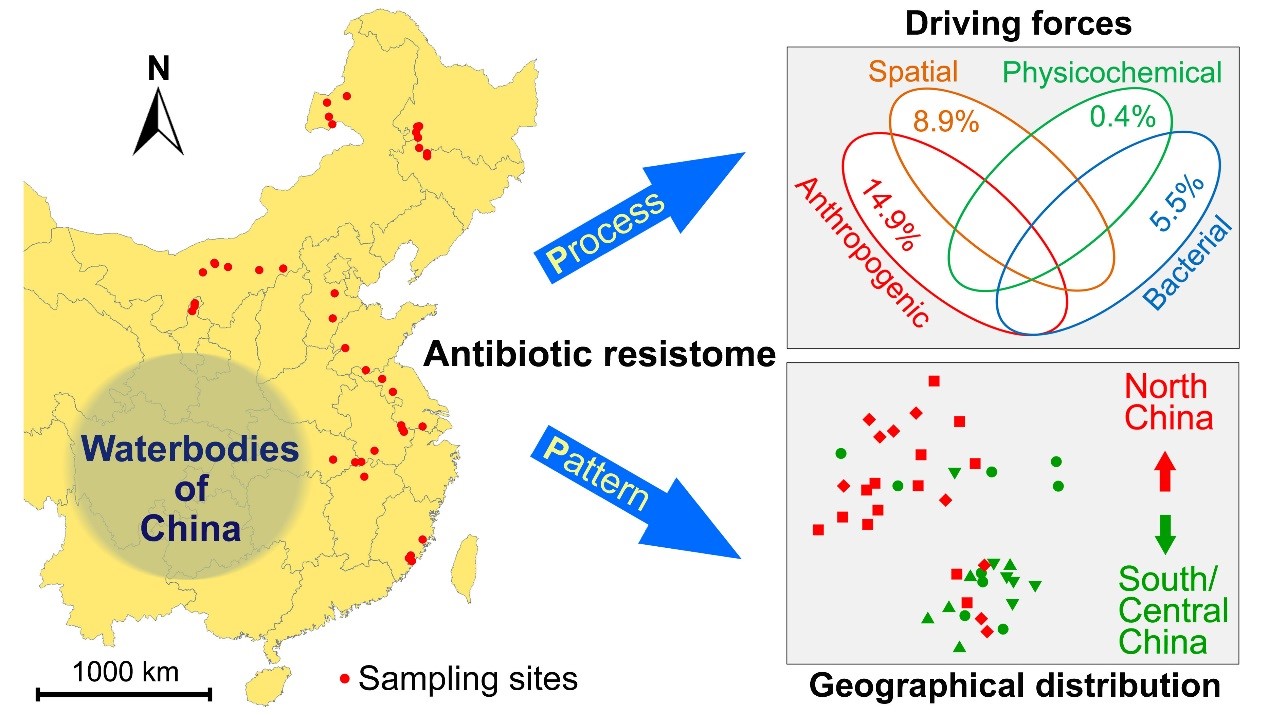
Antibiotics have been widely used to treat bacterial infections since the 1940s and have revolutionized global medicine. However, the abuse of antibiotics has triggered the antibiotic resistance problem. The antibiotic resistances of bacteria are conferred by antibiotic resistance genes (ARGs) which can spread among different bacteria.
Since the 21st century, the development rate of new antibiotics has been declining, while the emergence and spread rate of ARGs has been dramatically enhancing. Therefore, the antibiotic resistance of bacteria is recognized as a major global threat to public health. ARGs are widespread in aquatic environments, but we know little about their biogeographical distribution and occurrence at national scales.
The research group led by Prof. YANG Jun, together with Prof. ZHU Yongguan from the Institute of Urban Environment of the Chinese Academy of Sciences, analyzed the patterns of ARGs from 42 natural waterbodies (natural lakes and reservoirs) across China. They used high-throughput approaches and revealed the factors and mechanism affecting the ARGs distribution patterns.
A total of 167 ARGs and 9 mobile genetic elements (MGEs) were detected in this study. The major ARGs were multidrug genes and the main resistance mechanism was the efflux pump.
Although the absolute abundance of ARGs in the south/central waterbodies was similar to the northern waterbodies, the normalized abundance of ARGs was higher in the south/central waterbodies than in the north (mainly because of the aminoglycoside and multidrug resistance genes).
They found human activities strongly correlated with the normalized abundance of ARGs. The composition of ARGs in the waterbodies of south/central China was different from that in the north, and ARGs showed a distance-decay relationship.
Anthropogenic factors had the most significant effects on this spatial distribution of ARG composition, followed by the spatial, bacterial and physicochemical factors.
The result of this study indicated the ARGs exhibited biogeographical patterns and that multiple ecological mechanisms - such as environmental selection (human activities and local physicochemical parameters) and dispersal limitation - influence distribution of ARGs in these waters.
This study provided a valuable ecological insight to explain the large-scale dispersal patterns in ARGs, thereby having potential applications for both public health and environmental management.
This research entitled "Large-scale biogeographical patterns of bacterial antibiotic resistome in the waterbodies of China" was published in Environment International.
This study was supported by National Key Research and Development Program of China, National Natural Science Foundation of China and the K. C. Wong Education Foundation of Hong Kong.

Figure 1. Large-scale biogeographical patterns of bacterial antibiotic resistome in the waterbodies of China (Image by YANG Jun)

86-10-68597521 (day)
86-10-68597289 (night)

52 Sanlihe Rd., Xicheng District,
Beijing, China (100864)

